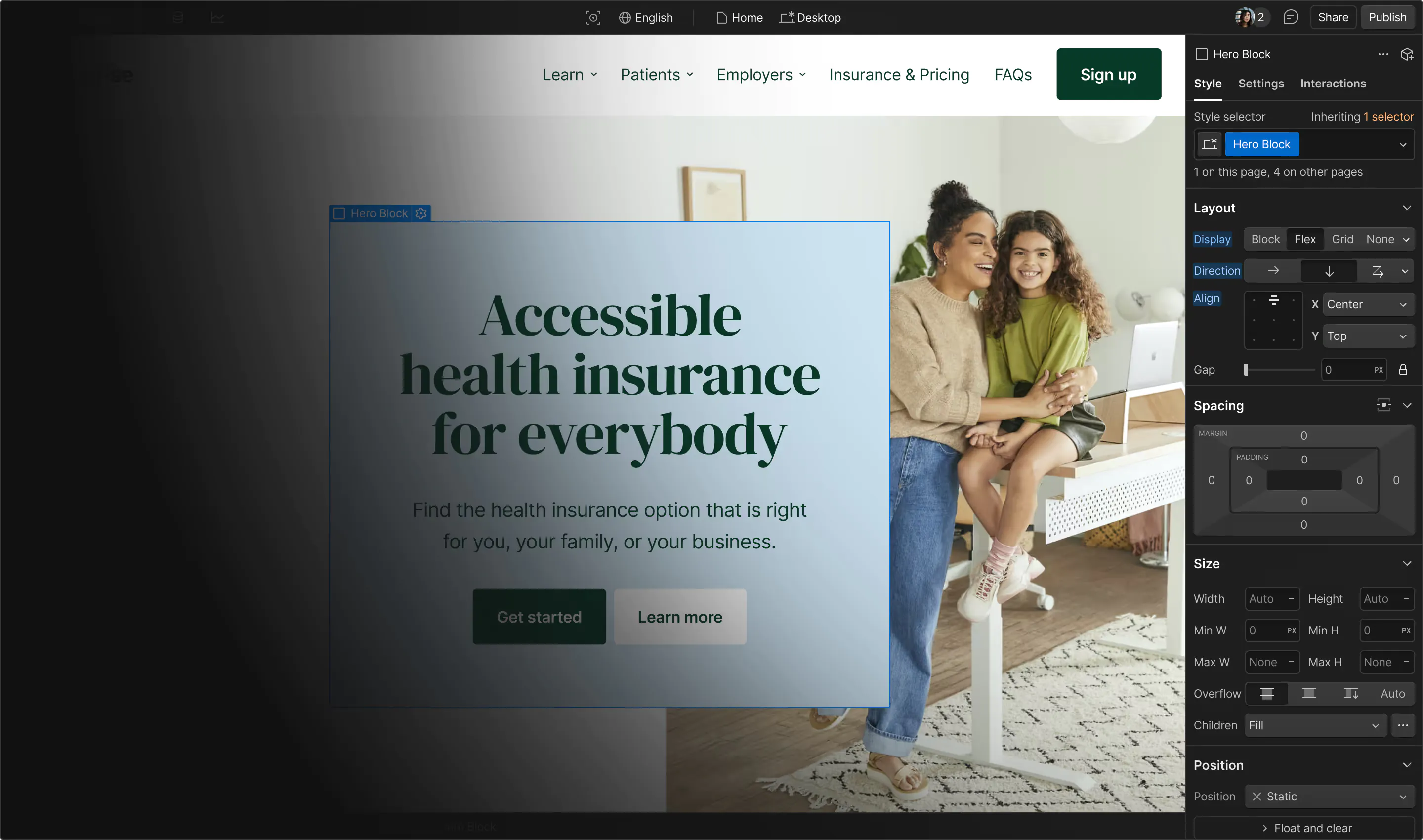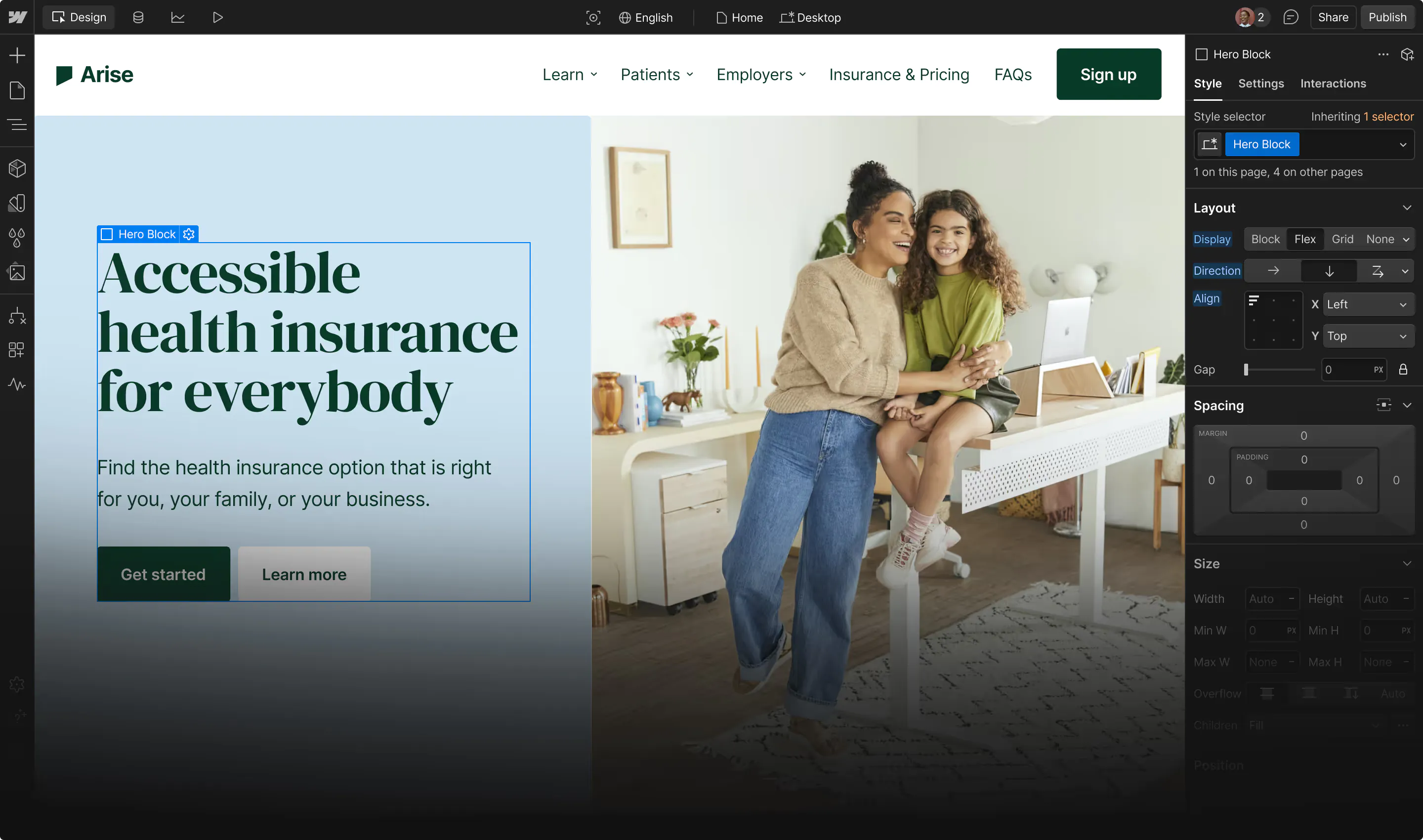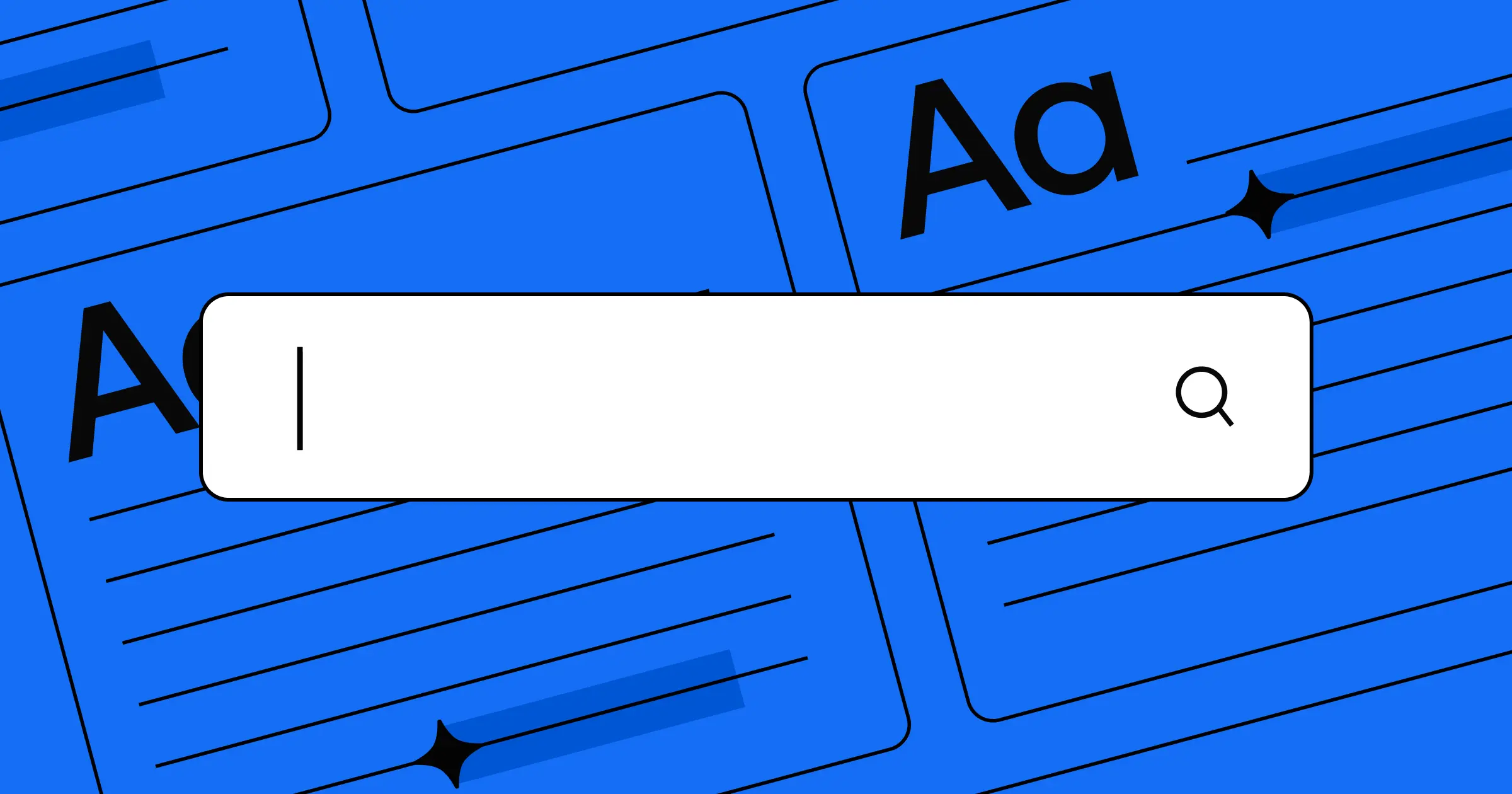Many businesses throw content at the wall and hope it sticks, resulting in a scattered user experience and missed conversion opportunities.
According to recent research, only 57% of businesses have a documented content strategy, while 82% of consumers say they abandon purchases due to poor website user experience.
The problems run deeper than most teams realize.
Content creators often mix up the purpose of a blog versus a resource center, which leads to overlapping efforts and diluted messaging, negatively impacting your lead generation effectiveness and SEO performance. Sales teams struggle with unqualified leads from poorly structured content funnels, and marketing teams can't properly attribute content performance to business outcomes.
Understanding the differences between blogs, resource centers, and content hubs can help you choose the structure that fits your goals and learn how to implement them effectively.
Defining blogs, content hubs, and resource centers
Let’s define each of these in more detail, so we can understand how they might be used together.
- A blog is time-based content designed for regular consumption, ongoing engagement, and search engine discovery. When building a blog, it’s vital to focus on fresh, timely, conversational content that builds relationships over time, with an ideal cadence of multiple posts per week.
- A resource center is a content library with high-value, actionable resources that solve specific problems in exchange for sharing contact information. Content here is often tiered based on prospect readiness. This approach is particularly effective for complex B2B sales and high-consideration purchases.
- A content hub is evergreen content that’s thematically organized by specific topics, industries, or expertise areas. This structure establishes authority and serves prospects and existing customers with ongoing education.
While these represent the most common structural approaches, it's worth noting that successful websites often blend elements from different structures.
Deep dive: How each structure works
Let's take a deeper look to understand how each of these structures works.
Blog
Purpose:
- SEO traffic through fresh content signals and keyword targeting
- Thought leadership through consistent industry commentary and insights
- Ongoing audience engagement and community building through regular communication
- Brand personality through authentic voice and perspective sharing
Organization and navigation: A blog is organized in reverse chronological order, with categories and tags. Users navigate through category dropdowns for broad topics, tag clouds for granular discovery, date-based archives, and related post suggestions. Author pages add another discovery layer. A typical user journey follows: discovery through search, social, or email → content consumption → related content exploration → newsletter signup or social following.
Technical foundation: RSS feeds, commenting systems, social media integration, and email subscription forms must seamlessly support content syndication and community building.
Success metrics: Reach and relationship building (e.g., organic traffic growth, time on page, bounce rate, social engagement, and email subscriptions).
Content strategy: Diverse types of content, including industry commentary, tutorials, opinion pieces, company updates, and guest posts. The SEO strategy targets trending keywords while building long-term topic authority through regular publishing and featured snippet optimization.
Resource center
Purpose:
- Lead capture through form fills
- Prospect nurturing and sales enablement through educational content that addresses specific pain points throughout the buyer's journey
- Customer segmentation through content preferences and engagement tracking
Organization and navigation: Resource centers have topic-based hierarchies with filtering by content type, industry, role, and funnel stage. Advanced search includes auto-complete and semantic understanding, while faceted filtering and personalization create adaptive experiences. A typical user journey follows: problem identification → resource search/browse → content preview → form completion → download → email nurturing sequences.
Technical foundation: A resource center integrates form builders, CRM systems, marketing automation, and analytics tracking to create seamless conversion experiences and detailed prospect intelligence.
Success metrics: Top-of-funnel conversion, as measured through form completion rates, download numbers, lead quality scores, cost per lead, and sales funnel progression.
Content strategy: Whitepapers, case studies, templates, tools, webinars, and assessments that justify sharing email addresses. Lead scoring assigns values based on content type and behavior, while gating content balances conversion with user experience.
Content hub
Purpose:
- Establishing market authority and competitive differentiation through comprehensive topic coverage and original research
- SEO dominance through topic cluster content and comprehensive keyword coverage
- Customer retention by delivering value (through customer education) and encouraging repeat visits
Organization and navigation: A content hub centers around a hub and spoke model, with main hub pages supported by bespoke content, topic-based silos, and curated learning paths. Navigation includes breadcrumb trails, "next in series" suggestions, and progress tracking. A typical user journey follows: topic discovery → foundational learning → deep-dive exploration → application and mastery → ongoing reference for skill development.
Technical foundation: Content relationship mapping, progress tracking systems, bookmark functionality, and contextual search lead to a strong user experience.
Success metrics: Learning effectiveness and authority building, including topic authority metrics, education completion rates, time spent on content, return visitor percentage, and customer satisfaction scores.
Content strategy: Comprehensive guides, original research, step-by-step processes, best practice frameworks, industry insights, and tool comparisons build authority through thorough coverage.
| Component | Blog | Resource center | Content hub |
|---|---|---|---|
| Primary business objective | Brand awareness and thought leadership | Lead generation and pipeline building | Authority establishment and customer education |
| Revenue impact model | Indirect through brand building and SEO | Direct through lead capture and nurturing | Mixed through authority building and customer success |
| Competitive differentiation | Unique perspective and timely insights | Valuable resources and expertise demonstration | Comprehensive knowledge and educational excellence |
| Customer lifecycle stage | Awareness and early consideration | Consideration and evaluation | Awareness, consideration, evaluation, and decision |
| CMS requirements | Standard blog functionality | Advanced forms, CRM integration | Custom content types with relationship fields, advanced tagging, personalized content recommendations |


















When to use each content structure
Choosing the right content structure depends on your primary business goals, audience characteristics, available resources, and market position. Here's how to match structure to strategy:
Choose a blog when:
- Primary goal: Drive organic traffic and build brand awareness through consistent thought leadership and industry commentary.
- Audience: General market seeking broader expertise, industry peers interested in your perspective, and potential customers in early research stages who value timely insights and authentic communication.
- Resources: Regular content creation capacity with team members who can consistently produce quality content multiple times per week.
Examples in action:

The Slack blog groups content by topic and persona (developers in this case) to show expertise and targeted content for their audience base.
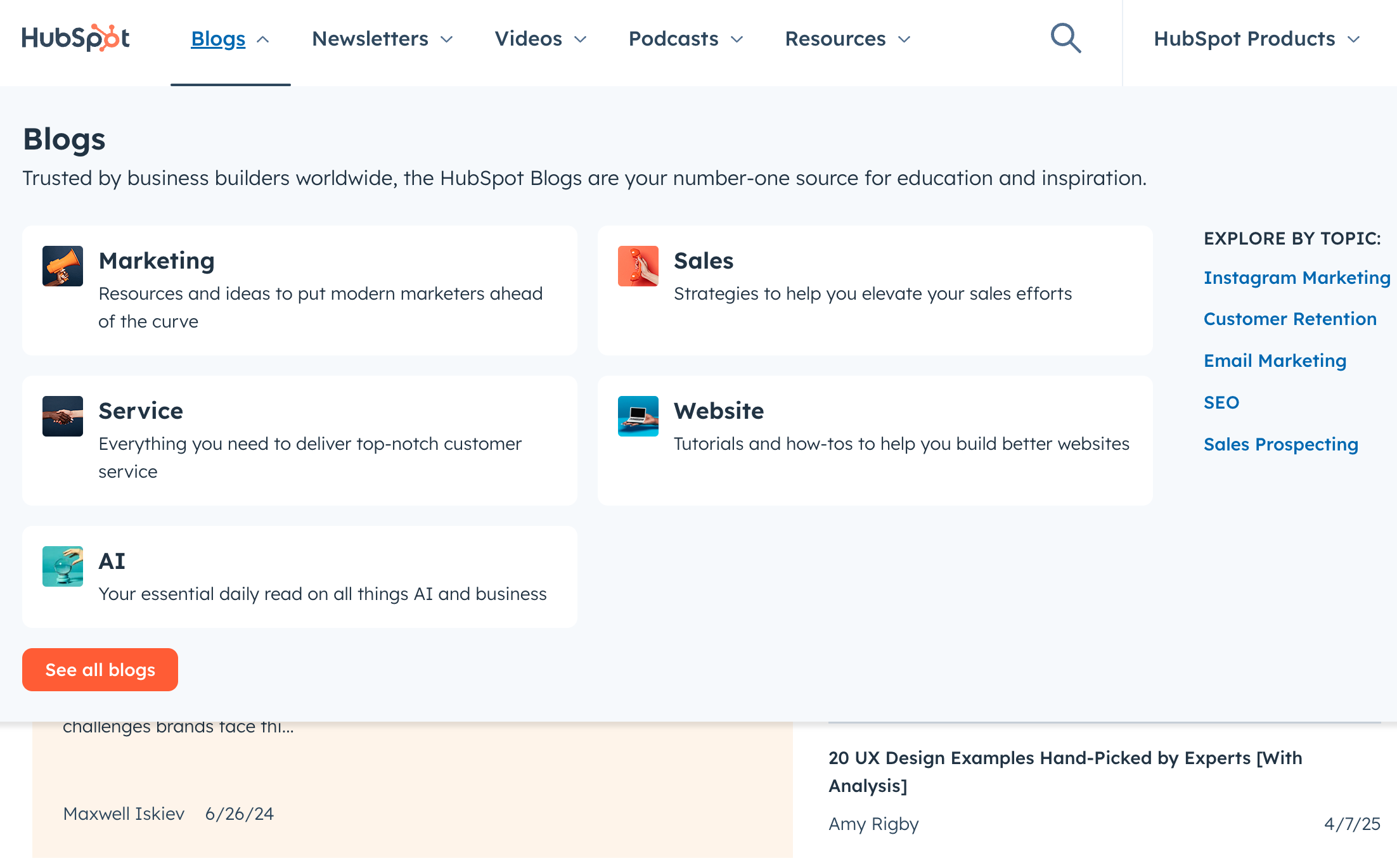
The HubSpot team created blogs based on topic and audience personas, with a topic-based sidebar, to give visitors a more personalized, choose-your-own-adventure feel to the content journey.
Choose a resource center when:
- Primary goal: Generate and nurture leads through valuable content exchange that supports complex sales processes.
- Audience: Decision-makers actively researching solutions, buyers in consideration phases comparing vendors, and stakeholders who need detailed information to support purchasing decisions.
- Lengthy sales process: Longer consideration cycles that require education, multiple stakeholders, and significant investment decisions where trust and expertise demonstration matter more than quick conversions.
Examples in action:
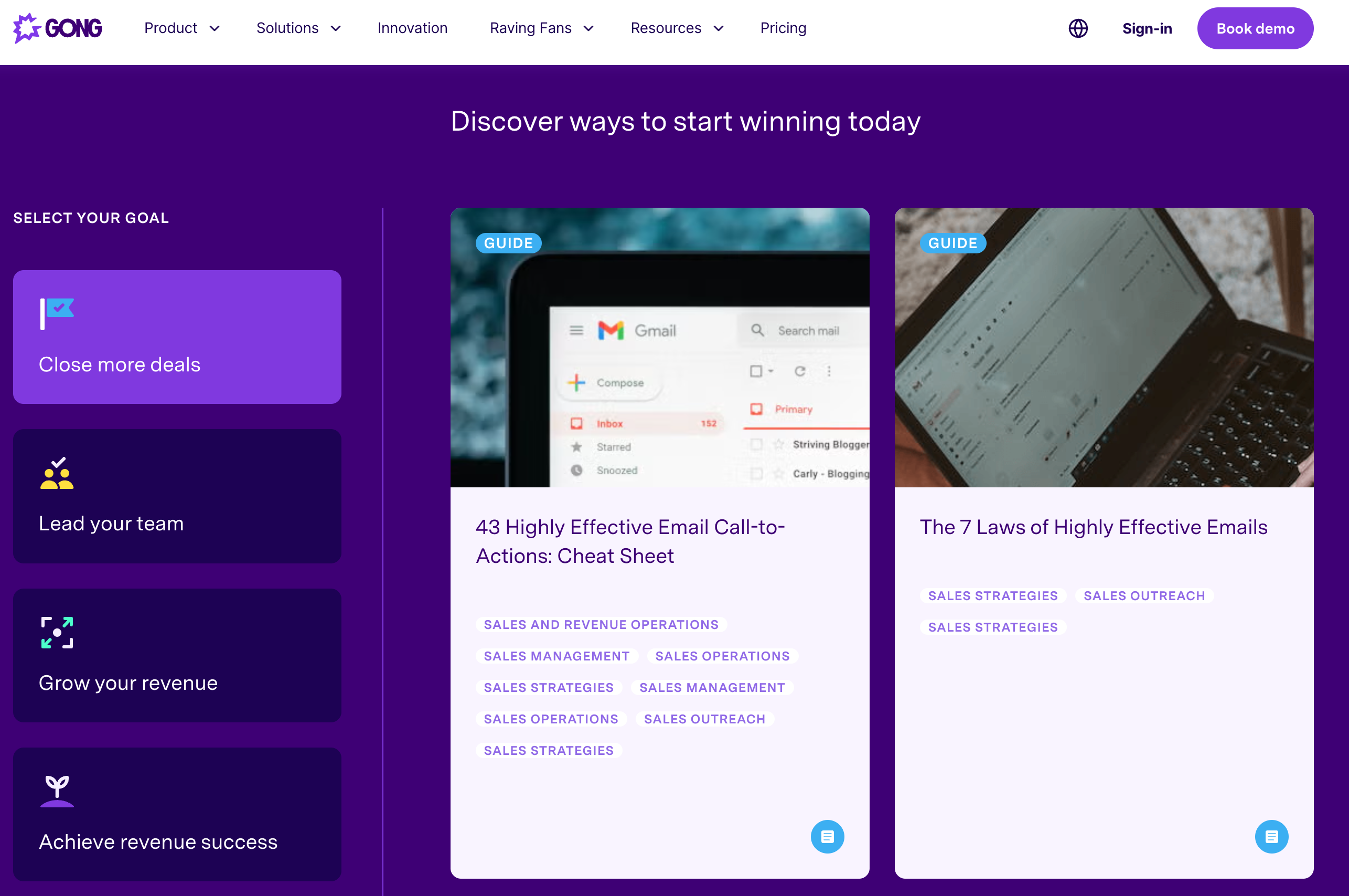
Gong's resource center puts the goal front and center, making the visitor's goal their filtering option. Doing so creates a clear distinction right away of what Gong helps customers achieve, and identifies key needs for audience members.
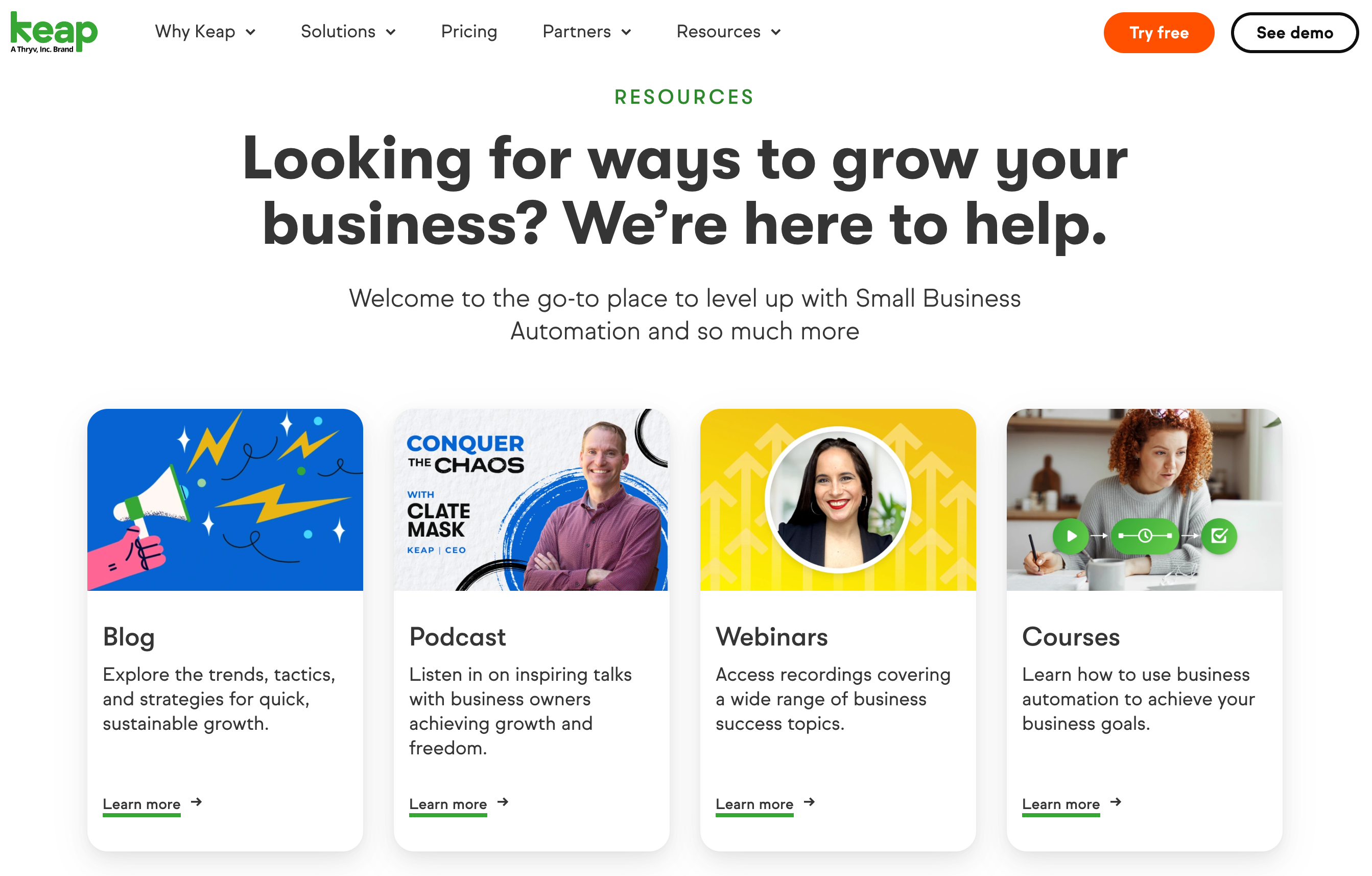
Keap makes it easy to find all learning content in one spot with links directly to all formats at the top of their resource center.
Choose a content hub when
- Primary goal: Establish thought leadership in specific areas while educating existing customers and demonstrating comprehensive expertise to prospects.
- Audience: Existing customers seeking ongoing education and skill development, prospects needing deep expertise validation before major commitments, and industry professionals looking for comprehensive learning resources.
Market positioning: Demonstrate comprehensive knowledge that competitors cannot easily replicate, establishing category leadership, or supporting complex customer success initiatives.
Examples in action:

Square created a content hub that functionally mirrors a blog, but focuses entirely on starting your business. Visitors get a similar experience to a blog, but with the singular focus of how to grow your business.
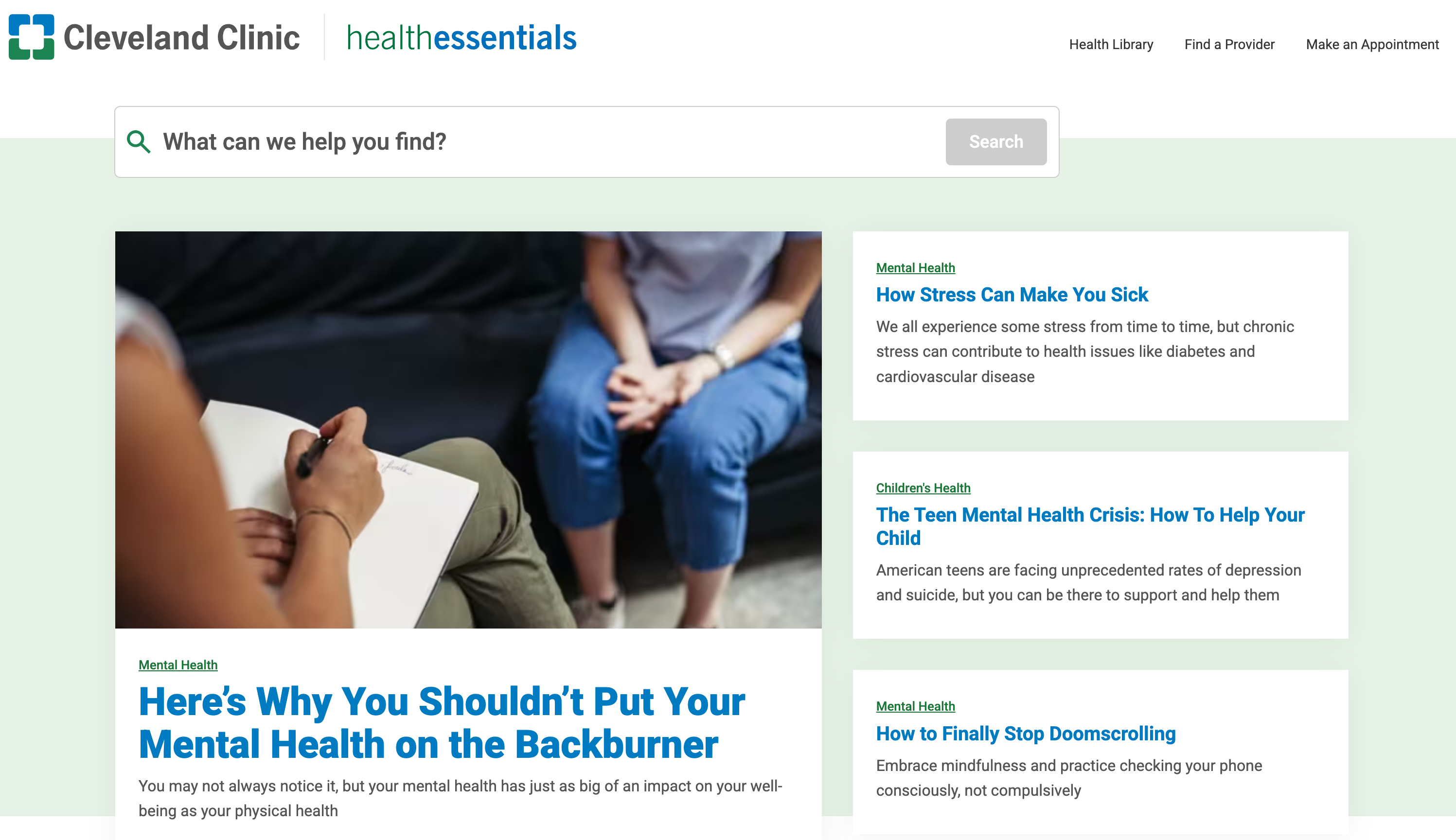
The Cleveland Clinic built a content hub that gives advice to patients for essential health best practices. A content hub like this establishes expertise, trust, and authority in a brand.
Making them work together
As business needs change, the most successful content strategies evolve by adopting multiple structures into their portfolio. Here's how to make them work in harmony:
- Content repurposing: Turn blog posts into resource center materials by expanding them — or consolidating multiple — into comprehensive guides. Convert resource center content into hub modules by removing gates and adding interactive elements.
- Cross-linking approach: Connect related content across structures to guide users through a natural progression. Blog posts reference detailed hub resources, resource center content links to relevant blog insights, and hub content supports blog authority.
- User journey mapping: Design intentional paths that guide users from discovery to conversion to retention. Blog content attracts initial awareness through search and social sharing. The resource center captures lead information while providing valuable tools and insights. The content hub supports learning and skill development while building authority and trust.
- Structure integrity: Keep each format true to its core purpose as you expand. Blogs should remain open and discoverable, resource centers should offer clear value exchange for contact information, and content hubs should prioritize learning and exploration. This clarity helps users understand what to expect from each section.
- Aligned success metrics: Establish distinct success metrics aligned with each structure's primary purpose: blogs for reach and engagement, resource centers for lead quality and conversion, and content hubs for authority building and educational effectiveness. Mixing metrics can weaken each structure's unique value.
Building your content foundation for growth
With Webflow’s visual design capabilities, you can create distinct experiences for each content structure while maintaining brand consistency. The built-in CMS lets you organize content differently across sections: open blog posts for discovery, gated resource downloads with custom forms, and searchable hub content with advanced filtering. You can easily implement cross-linking between structures, set up different conversion paths, and track separate analytics for each content type.
Ready to optimize your content structure? See how to use Webflow to build your blog, resource center, and/or content hub.
.jpeg)
9 B2B website optimization ideas that work
In this ebook, learn strategies to increase B2B website conversions
